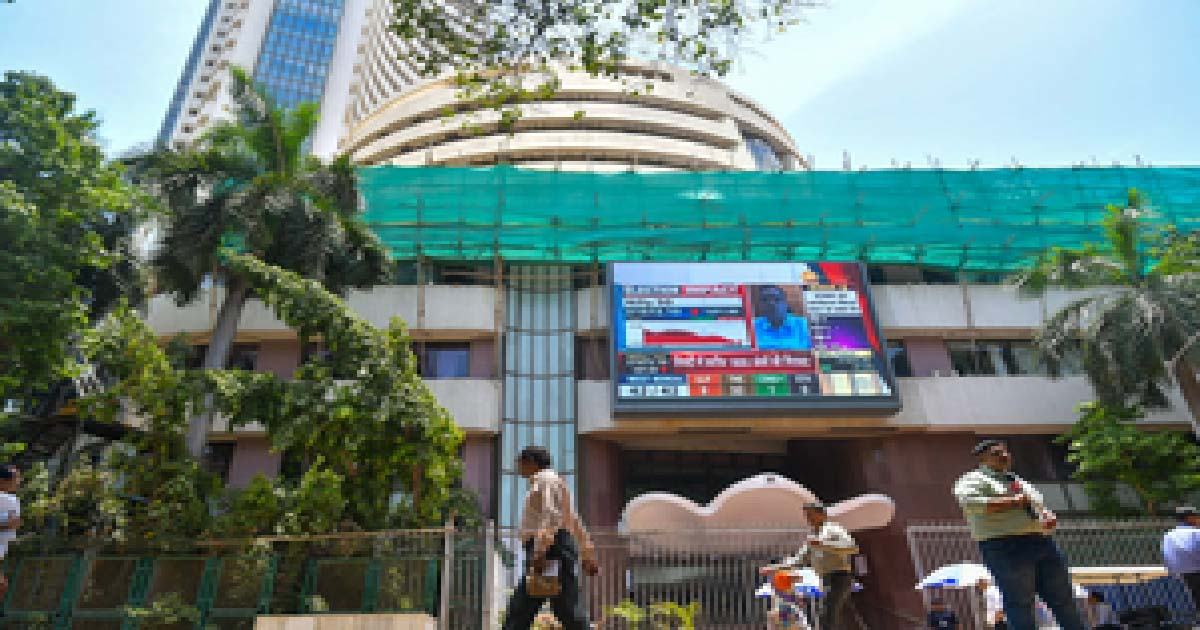Business
PhonePe, NITI Aayog team up to launch fintech open hackathon

Leading digital payments platform PhonePe on Thursday announced that NITI Aayog, in association with the platform, will be hosting the first-ever open-to-all hackathon that aims to showcase path-breaking solutions for the fintech ecosystem.
The Hackathon will provide an opportunity for innovators, digital creators and developers from all over India to think, ideate and code.
Winning teams stand to win exciting cash prizes worth Rs 5 lakhs, the platform said in a statement.
Participants at the hackathon need to use any open-data APIs like PhonePe Pulse along with frameworks such as Account Aggregator as a foundation to power the use cases, such as alternate risk models for lending, insurance or investments with a focus on financial inclusion; innovative products that use the power data signals for various demographics and geos for broader adoption of financial services; improved visualisation and derived intelligence based on the digital payments data.
Participating teams can have one or up to five participants. They can use data sources like PhonePe Pulse, the Open Government Data Platform and RBI reports on payments to build on their submission.
In addition, they can access any other open data platforms that they are aware of along with the Setu AA Sandbox or the Setu Payments Sandbox to develop their hacks. By the end of the event, participants will be required to present a working prototype of their hack to the judges, post which each hack will be judged based on certain parameters.
While the judges consider the hacks, they might ask for additional information on the prototypes.
The winning team will be awarded Rs 1,50,000. Two teams, in second and third places, will win Rs 1 lakh and Rs 75,000, respectively.
However, PhonePe mentioned that judges may decide to award fewer or more prizes depending on the hacks submitted.
The last date to register for the event is February 23 and the deadline to submit the final entries is February 25 by noon.
There will be a live AMA on February 21 at 4:00 PM to answer any questions the participants may have about the Hackathon. The winners of the Hackathon will be announced on February 28.
The NITI Aayog fintech month commenced on February 7 and the week witnessed some thought-provoking keynotes, in-depth fireside chats, and panel discussions.
Business
Commercial LPG cylinder prices reduced across metros from November 1

New Delhi, Nov 1: State-run oil marketing companies have reduced commercial LPG cylinder prices across metros, offering a slight relief to businesses, starting from Saturday.
The move will provide marginal relief to thousands of small and medium-sized businesses.
According to the latest revision announced by state-run oil marketing companies (OMCs), the 19-kg commercial LPG cylinder will now cost Rs 1,590.50 in Delhi, reflecting a Rs 5 cut from the previous rate of Rs 1,595.50.
With the highest drop of Rs 6.50 per cylinder among the metros, the charge in Kolkata will now be Rs 1,694 per cylinder. Chennai will now charge Rs 1,750 (down Rs 4.50), while Mumbai now charges Rs 1,542 (down Rs 5).
For businesses that depend significantly on LPG for their everyday operations, like restaurants, hotels, and catering services, the most recent revision provides a small reprieve following a hike of Rs 15.50 that was put into effect late in September.
However, domestic LPG prices have not changed and are the same in every city.
Earlier in September, OMCs had reduced the price of commercial LPG gas cylinders by Rs 51.50. Following the revision, a 19-kg commercial LPG cylinder in Delhi was available at Rs 1,580.
Earlier, OMCs had reduced the price of a 19 kg commercial LPG gas cylinder by Rs 33.50. Before that, prices had been reduced by Rs 58.50 on July 1.
Earlier in June, oil firms had announced a Rs 24 cut for commercial cylinders, setting the rate at Rs 1,723.50. In April, the price stood at Rs 1,762. February saw a small Rs 7 reduction, but March reversed this slightly with a Rs 6 increase.
Meanwhile, the Centre had announced to provide 2.5 million free LPG connections under the Pradhan Mantri Ujjwala Yojana (PMUY) during the festival season.
Business
Nifty, Sensex end 4-week winning streak amid profit booking

Mumbai, Nov 1: Indian equity benchmarks ended their four-week winning streak, closing marginally lower this week amid profit-booking and mixed global cues.
Benchmark indices Nifty and Sensex dipped 0.65 and 0.55 per cent during the week to close at 25,722 and 83,938, respectively.
Market optimism was bolstered during the first three sessions by positive domestic economic data and China’s approval for few Indian companies to import rare earth magnets.
However, sentiment turned cautious after the US Federal Reserve cut its benchmark interest rate by 25 basis points to the 3.75 per cent–4 per cent range.
“India’s industrial output rose 4 per cent YoY in September 2025, supported by strong manufacturing activity. The US Federal Reserve hinted that the 25-bps cut might be the final one in 2025, which dampened hopes of further near-term easing,” said Ajit Mishra- SVP, Research, Religare Broking Ltd.
Further, steady corporate earnings and continued FII inflows through October helped cushion the downside, he added.
Metals, energy and realty stocks were the major contributors to the rally, while auto, pharma and IT stocks experienced profit-taking.
“While PSU banks surged on reports of a potential hike in foreign investment limits, metal counters gleamed on renewed optimism after China’s pledge to rein in steel overcapacity and signs of progress in US-China trade talks,” added Vinod Nair, Head of Research, Geojit Investments Limited.
Analysts said that capital market stocks lost momentum as SEBI’s proposed overhaul of TER structures weighed on sentiment.
Support for the Nifty is currently located close to the 25,600 zone and the 25,400 zone, while resistance is seen around 26,100, analysts said.
In the upcoming holiday-shortened week, investors are looking for cues from the final readings of the HSBC Manufacturing PMI and HSBC Services and Composite PMI data.
Investors are also keen on the India-US trade deal and trends in developed markets, while on the earnings front, several index heavyweights are set to announce their quarterly results.
Business
India aims 300 million tonnes of crude steel production capacity by 2030

New Delhi, Oct 31: India aims to achieve 300 million tonnes of crude steel production capacity by 2030, Union Minister of State for Steel, Bhupathiraju Srinivas Varma, said on Friday.
In a meeting with Sara Modig, State Secretary to Minister for Energy, Business and Industry, Sweden, here, in presence of Swedish Ambassador to India Jan Thesleff and other officials, the minister highlighted India’s growing steel sector, driven by visionary leadership of Prime Minister Narendra Modi.
Notably, India’s domestic steel demand is growing at an impressive 11-13 per cent, fuelled by large-scale infrastructure projects, while global demand faces a slowdown, according to Steel Ministry.
The discussions were held to explore collaboration opportunities in the field of research and development in Green Steel production and other advanced technologies to reduce carbon emissions.
Varma reaffirmed the invitation extended to Sweden to participate in Bharat Steel 2026, an International Conference-cum-Exhibition dedicated to the steel industry, scheduled to be held on April 16–17, 2026, at Bharat Mandapam, New Delhi.
Meanwhile, the growth rate of India’s eight core industries was recorded at 3 per cent in September this year compared to the same month of the previous year, with the steel and cement sectors recording strong growth during the month, data released by the Commerce and Industry Ministry showed.
Steel production surged by a robust 14.1 per cent in September compared to the same month of the previous year on the back of increased demand from big-ticket infrastructure projects being carried out by the government. The cumulative growth of steel during April to Sept of 2025-26 increased by 11 per cent over the corresponding period of the previous year.
The government imposed a 12 per cent temporary safeguard duty on certain steel imports in April 2025 to protect the domestic market. These measures follow previous actions and are part of ongoing efforts to safeguard the industry while promoting self-reliance under initiatives like ‘Make in India’.
-

 Crime3 years ago
Crime3 years agoClass 10 student jumps to death in Jaipur
-

 Maharashtra1 year ago
Maharashtra1 year agoMumbai Local Train Update: Central Railway’s New Timetable Comes Into Effect; Check Full List Of Revised Timings & Stations
-

 Maharashtra1 year ago
Maharashtra1 year agoMumbai To Go Toll-Free Tonight! Maharashtra Govt Announces Complete Toll Waiver For Light Motor Vehicles At All 5 Entry Points Of City
-

 Maharashtra1 year ago
Maharashtra1 year agoFalse photo of Imtiaz Jaleel’s rally, exposing the fooling conspiracy
-

 National News1 year ago
National News1 year agoMinistry of Railways rolls out Special Drive 4.0 with focus on digitisation, cleanliness, inclusiveness and grievance redressal
-

 Maharashtra12 months ago
Maharashtra12 months agoMaharashtra Elections 2024: Mumbai Metro & BEST Services Extended Till Midnight On Voting Day
-

 National News1 year ago
National News1 year agoJ&K: 4 Jawans Killed, 28 Injured After Bus Carrying BSF Personnel For Poll Duty Falls Into Gorge In Budgam; Terrifying Visuals Surface
-

 Crime1 year ago
Crime1 year agoBaba Siddique Murder: Mumbai Police Unable To Get Lawrence Bishnoi Custody Due To Home Ministry Order, Says Report












